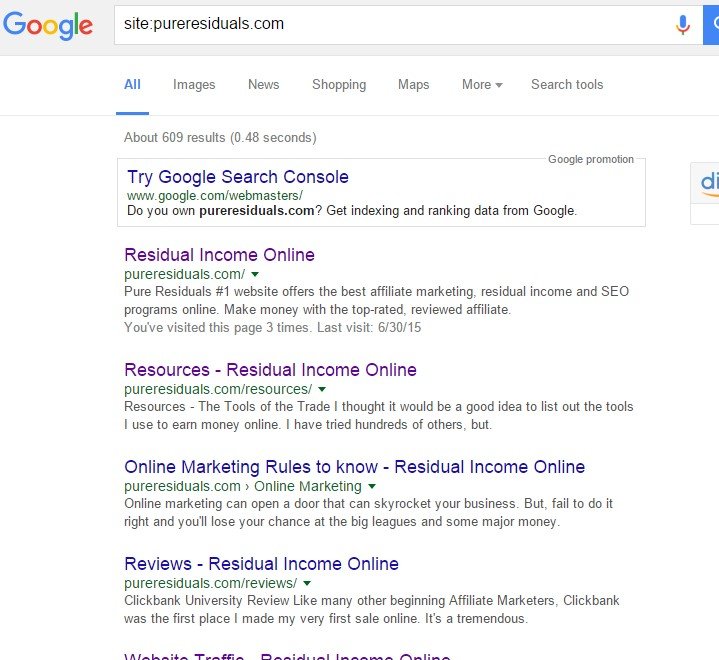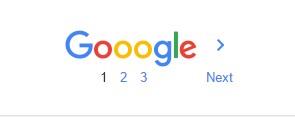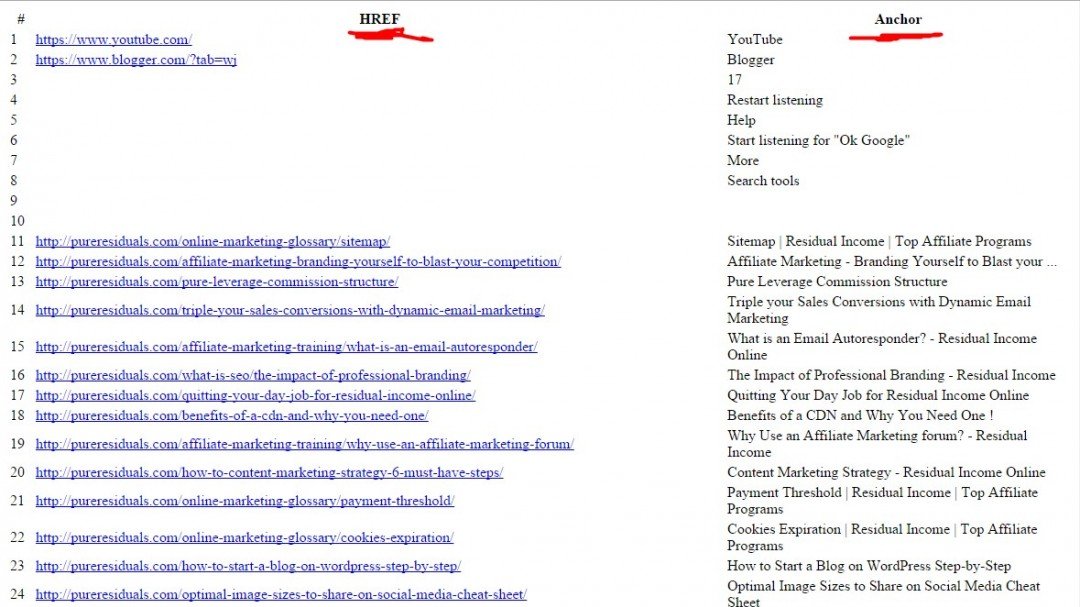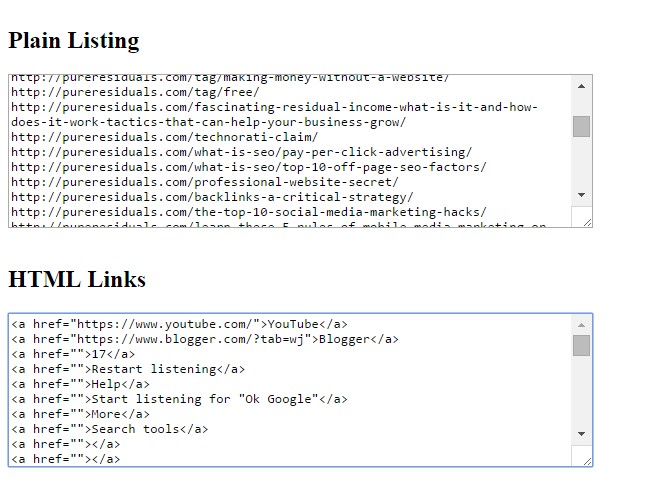
Getting a List of ALL Your Links
Okay, now you have learned to tweak the Google Search in your browser to display things a bit differently. Also, you have a snazzy new Bookmarklet installed on your Favorites tool bar to do something neat that we're about to see.
STEP 1: The New Search
First, Open a new browser tab and just go to Google.com again.
Again, just type in the following into the search box:
site:yourdomain.com
Again, I'm going to put my website domain in there as such:
site:pureresiduals.com
And then, I'm presented with the following:

Now, you may be asking yourself, "Uh, Peej, what's the difference?"
Because we changed or tweaked the Google Search Settings option, instead of 10+ pages of links, I'm only presented with 3.
Scrolling down to the bottom of MY search results, I see this now:

Before, it was showing more than 10 pages to sift through. BECAUSE, now the search is showing 100 links PER page, instead of only 10.
Okay, now for the beauty of the bookmarklet.
STEP 2: Click the Bookmarklet and Watch the Magic
While on the first page, I simply click the bookmarklet button that we installed on the previous page of this training:

Yep, right there where it says Simple Google Results (if yours shows the entire title, mine just says "Simple Google..." because I have a lot of favorites.)
When you click that, another page will open such as this:

Pretty cool, huh??
"But, wait, Peej, what is all this???"
I'm so happy you asked. Let's dissect it just a bit.
You'll notice I underlined the two column headings for you.
- HREF is the actual link (left column)
- Anchor is the text portion of that link
For more information on Anchor text, what it is and how to do it, please see this:
The Definitive Guide to Anchor Text and Backlinks
Okay, so let's scroll down a bit and see what else we have:

So, you can copy this information out and into a text editor OR a spreadsheet program of your choice.
Then, close the browser tab presenting this information.
Returning to the Google Search, I can click on Page 2.
Then again,click the Simple Google Results bookmarklet again and get the next 100 links and repeat as many times as needed.
This information is useful for me to see what Google is indexing, the way the links are being sensed and to find certain links on certain pages.
Compare Results
You should now have two lists of information within your chosen text editor or spreadsheet program.
One list is the links you are submitting to Google.
The other list is what Google has indexed.
You can search through them to see what the differences are, i.e, what you are submitting and what Google is not indexing.
If you have a long list of posts as I do, Excel works nicely because I can do a keyword search.
When you have a list of pages that are not indexed, there are a couple of things to consider:
a) If it is a poor quality post that is not offering any value, then delete it and remove it from the Google index.
b) If it’s a good post that should be indexed, then link to it from other posts on your site. This will help Google pick it up. Also, you can post it with Social Media platforms like Twitter, Facebook, StumbleUpon and so on.
That being said, we still won't get 100% indexed. (Well, at least not with a mature WordPress blog like mine.) But, you can nailed down the highly important ones!

And, here's the kicker!!!!
Let's say you wanna see how a competing site is using their links. Try this on a competitors site and you can do a wee bit of spying and learn some things! (Yes, other programs can do this too, but this is free!)
I know this was a lot of information and somewhat advanced. But, I hope you were able to takeaway a few nuggets of knowledge as always!
Cheers!
pj











